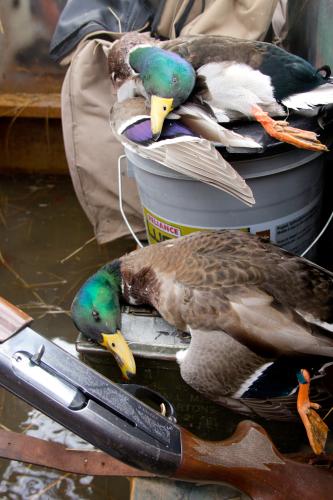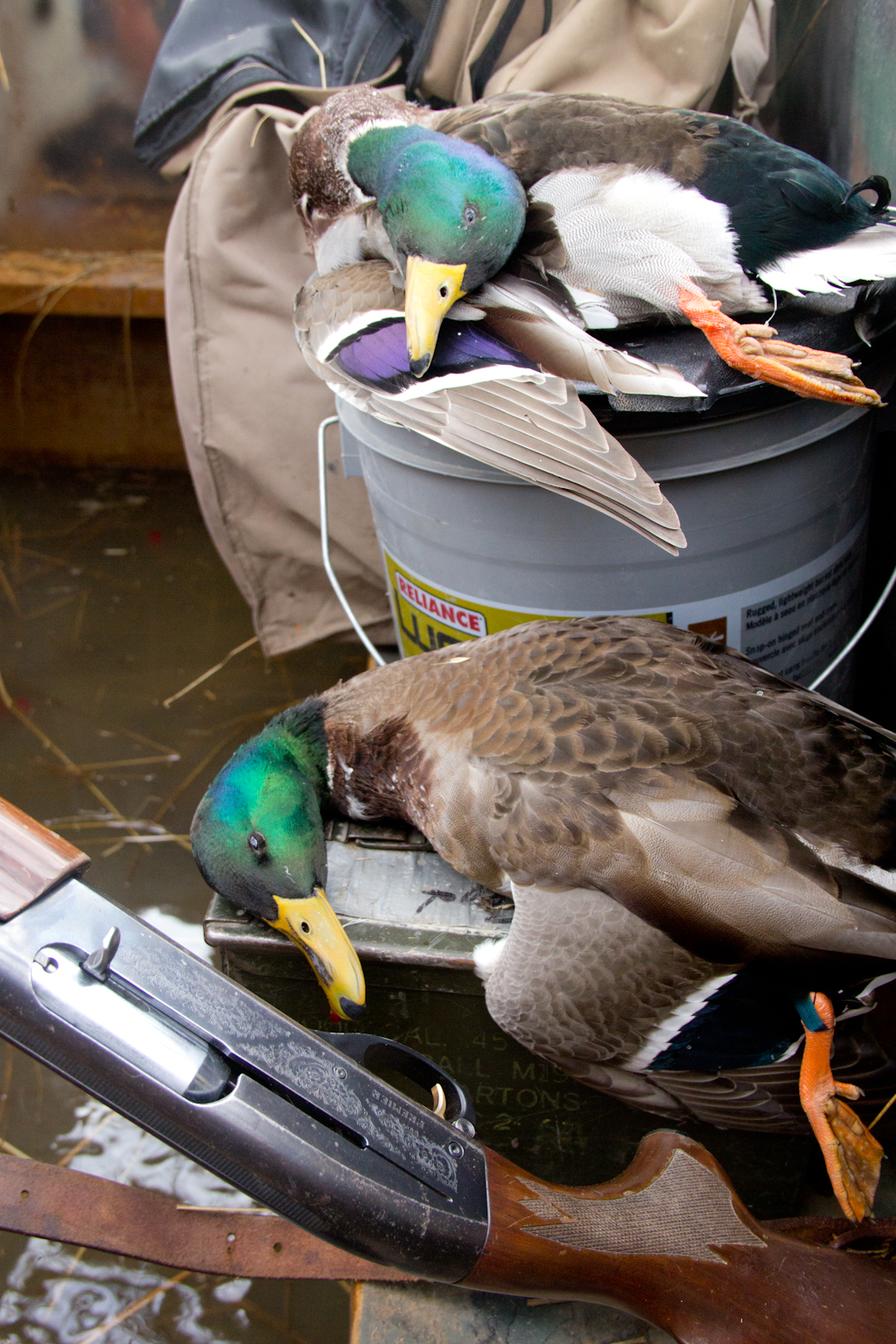
Xplor reconnects kids to nature and helps them find adventure in their own backyard. Free to residents of Missouri.


JEFFERSON CITY, Mo.–North American waterfowl continue to benefit from favorable nesting conditions in the north-central United States and Canada, according to surveys conducted during the summer. Meanwhile, habitat conditions in Missouri have set the stage for an excellent hunting season if weather continues to cooperate.
The U.S. Fish and Wildlife Service estimates this year’s total number of breeding ducks at 49.2 million. That is up 8 percent from last year, and 43 percent above the long-term average. Mallard numbers were estimated to be 10.9 million, similar to last year’s number and up 42 percent long-term. Long-term population trends for other popular duck species in this year’s survey include:
Resource Scientist Andy Raedeke, with the Missouri Department of Conservation, says late-summer rains have been both a blessing and a curse, depending on location.
“On the bright side,” says Raedeke, “public and private wetlands that depend on water from high streams and rivers should be in good shape going into the fall. Similarly, pumping should not be an issue on most public and private wetlands. In some cases, the late summer rains provided an extra boost to moist soil plants and will contribute to excellent moist-soil seed production on many areas.”
However, he notes that in other locations the late summer rains caused flooding that reduced moist soil seed production and seed availability. He says the extent and duration of flooding at each wetland will determine if the flooding was beneficial or detrimental. The longer native plant seed remains underwater, the more it deteriorates.
Conservation Department wetlands in northwestern and southeastern Missouri are generally in good shape. North-central Missouri will have abundant water, but some wetlands likely were negatively affected by late summer floods. The same holds true for north-east Missouri and the area around the Missouri-Mississippi river confluence.
Raedeke says late-season rains helped western Missouri wetlands, which had been in drought. Timely rains and migration events could produce excellent hunting at Four Rivers and Schell Osage conservation areas (CAs).
“Hunters will want to pay attention to river and reservoir levels throughout the fall,” says Raedeke. “With the soil already saturated, it may not take much rain this fall to flood additional habitat and provide more hunting opportunities than we have in drier years.”
Managers of most public wetland areas around the state report conditions ranging from average to excellent. Most areas have at least good conditions. Here are rundowns on areas with the best prospects.
COLUMBIA BOTTOM CA sustained significant flood damage in 2013, but the area is back to normal this year. Both moist soil vegetation and row crops are in good shape, and the area’s pumps should be able to provide enough water to flood this food and provide good hunting opportunities. Hunters will find concealment cover sparse in some pools, however.
MARAIS TEMPS CLAIR CA has very good natural food. Crops in wetland pools are limited, but they look very good.
B.K. LEACH CA’s natural, moist-soil food is looking very good. Heavy rains flooded several food plots before they matured, and most of the pools have higher water levels than normal for this time of year.
DUCK CREEK CA is a special bright spot this year. Renovations there are complete, and hunters will find excellent moist-soil vegetation and good to very good corn in most of the hunting pools of Units A and B. All the wells are up and running, and all of the hunt units will be available this year. The recent red-oak survey indicates an above average production of acorns in the green-tree reservoirs, Pools 2 and 3. The wade-in Pools 7 and 8 also indicate a good a production of acorns as well. Pool 1 reservoir currently has an adequate water supply to flood the timber, however, there will be a couple of weeks delay flooding these pools until the trees begin to go dormant in mid to late November. There is no ADA blind available at Duck Creek.
TEN MILE POND CA has good to excellent moist-soil vegetation and food plots, and water conditions should be normal.
EAGLE BLUFFS CA has excellent moist soil production and bumper yields of grain crops. Pumps and other infrastructure are in good shape and water availability a month before the season was above normal, promising high-quality waterfowl habitat this fall.
BOB BROWN CA has had ample rain throughout the summer, and food-plot crops in the pools look good. The natural foods in the moist soil units look really good as well, thanks to the late-summer rains. High flows in the Missouri River are expected to permit pump operation all season to flood this food and set the table for ducks.
NODAWAY VALLEY CA has normal conditions, with row crops and natural foods both looking very good. Recent late summer rains ensure the area’s pumps will be able to provide ample water throughout the fall.
FOUR RIVERS CA is another area that had flooding problems last year. That has not been an issue this year. Instead, late-summer rains have contributed to good habitat conditions. Overall, the moist-soil units and food plot crops are good to excellent throughout Units 1 and 2, the “draw units.” Hunters can expect the number of available positions to be about normal. Natural food also is abundant in Units 3 and 4, the “open hunting units.” Unit 3 dried up during the hot, dry period in the summer, and rainfall has not been adequate to recharge much of this area. Currently there are 75-100 acres of water in the Ducks Unlimited Marsh in Unit 3. Most of Unit 4 was drained during the summer to facilitate construction of a new concrete floodway, which is now complete. Recent rains provided some recharge, but water is still very shallow and scattered throughout the unit, consisting of 300 to 400 acres of shallow water between the 6 pools. The amount of flooded acreage could increase if current, rainy conditions persist.
SETTLES FORD CA Settle’s Ford has good moist soil vegetation and crops. Water levels are normal, with some food being lost with recent flooding.
MONTROSE CA has fair moist soil vegetation, and water levels are normal.
SCHELL-OSAGE CA has received timely – but not excessive – rains this year, creating excellent waterfowl habitat. Moist-soil and food plot crops are excellent, and recent rains have helped recharge the lakes, which serve as a water supply to the wetlands. Hunters can expect the number of available positions to be about normal this year.
GRAND PASS CA reports very good conditions going into the hunting season. Moist-soil vegetation and crops look good. Hunters may encounter some areas of sparse vegetation in Pool 6, so cover in late season may be challenging in certain parts of the pool. Water supply should not be a problem this year, thanks to ample flows in the Missouri River.
FOUNTAIN GROVE CA has good habitat conditions in spite of a significant flood that put the entire west side of the area under water on Sept. 11. The flooding might affect food quality and quantity toward the middle and end of the hunting season, but at the moment the area has provided plenty of water in units that depend on rainfall or overbank flooding for hunting opportunity. Crops on east side walk-in units look good, so this area should offer good hunting this year. Flood waters allowed area staff to recharge Che-Ru Lake to full pool, which will provide ample water to flood the east-side units.
A handful of areas have less encouraging news.
TED SHANKS CA sustained damage from summer flooding again this year. As a result, food conditions on the area are poor. Smartweed and millet will provide some food in a few pools, but flooding took out all crops, leaving many pools with little or no food for ducks. Lack of cover will further hamper hunters. All flood-repair work has been completed, but ongoing construction work on the south end of the area will reduce the number of parties the area can accommodate this year. Hunting will only be in the upper wade and shoot pools and the ADA blind.
DARK CYPRESS CA has fair moist-soil vegetation this year, but extended wet period this summer prevented planting any food plots.
OTTER SLOUGH CA’s crops range from poor to good this year. Many were late getting in due to wet conditions and a prolonged dry period. Army worm damage after planting didn’t help. Flooding of Units 8, 9, and 10 could be delayed due to ongoing construction. The bright spot is good moist-soil vegetation on Otter Slough.
COON ISLAND CA has crops ranging from poor to fair for the same reasons as Otter Slough. Water management should be normal. Moist-soil vegetation is good at Coon Island.
Updated information about hunting conditions at the Conservation Department’s managed wetlands is available at mdc.mo.gov/node/9627.
Weather is the final factor – and always a wild card – in determining waterfowl hunting success. The best waterfowl seasons have a series of cold fronts that push waves of new ducks into Missouri from farther north throughout the hunting season. The worst-case scenario is a strong, early-season cold front that pushes the ducks into Arkansas before Missouri hunters have much chance at them. Another less-than-ideal possibility is a late fall, when ducks arrive late in one or more of Missouri’s three hunting zones and leave soon after.
Missouri’s waterfowl seasons are set to coincide with the average peak of migration in previous years. This year’s season dates are:
Whether these dates coincide with peak migrations and how long ducks and geese linger in the Show-Me State this year won’t be known until the season is history.
Details of duck and goose hunting regulations are available in the 2014-2015 Waterfowl Hunting Digest, which is available wherever hunting permits are sold, at Conservation Department offices and nature centers, or online at www.mdc.mo.gov/node/5646/.
More detailed information about hunting conditions at state-owned wetlands is available at mdc.mo.gov/node/9627. For information about this year’s duck and goose population surveys, see http://1.usa.gov/1ozPJVt.